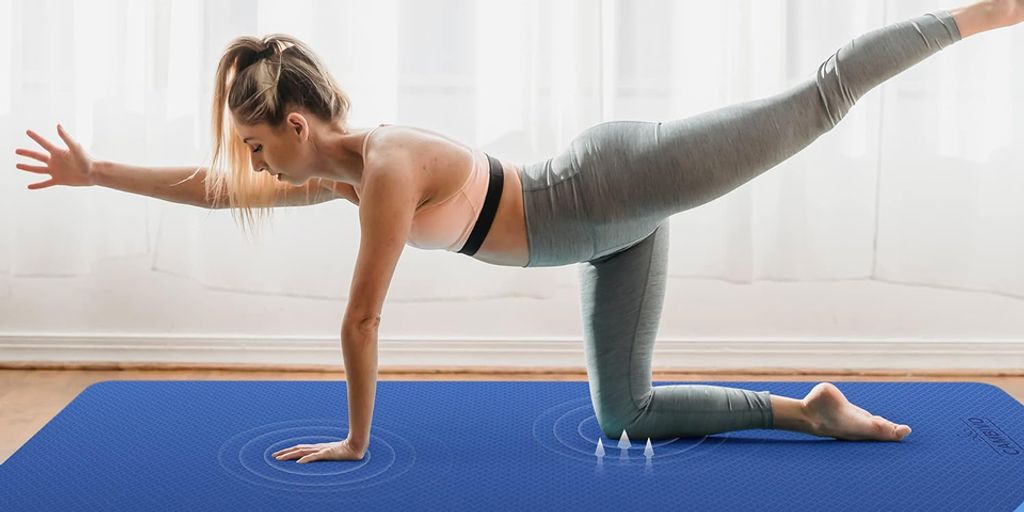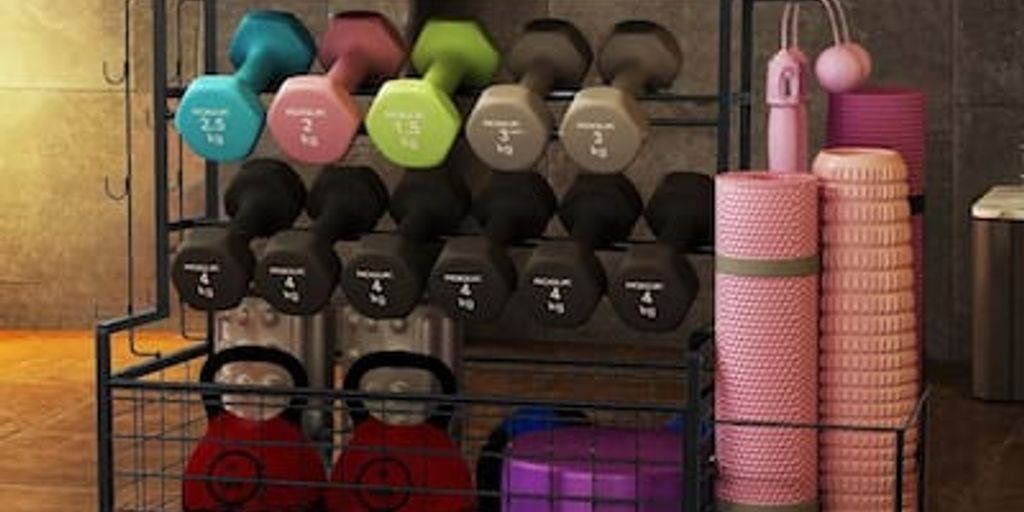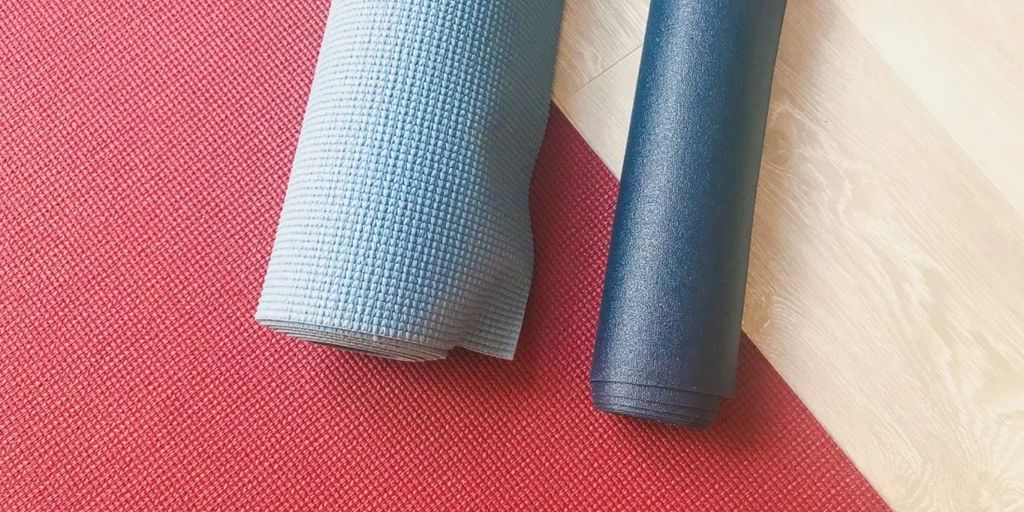
The Ultimate Guide to Choosing a Non Slip Yoga Mat for Your Practice
Choosing the right non slip yoga mat is essential for a safe and effective yoga practice. With so many options available, it can be overwhelming to determine which mat will best suit your needs. This ultimate guide will walk you through the key factors to consider when selecting a non slip yoga mat, ensuring you make an informed decision that enhances your practice.
Key Takeaways
- Non slip mats are crucial for preventing injuries and improving stability during yoga practice.
- Different materials and textures offer varying levels of grip and eco-friendliness, so choose based on your priorities.
- The right thickness and cushioning can provide joint protection and balance comfort with performance.
- Durability and proper maintenance can extend the life of your yoga mat, making it a worthwhile investment.
- Price and quality vary widely, so consider your budget and read user reviews to find the best mat for your needs.
Understanding the Importance of a Non Slip Yoga Mat
Why Non Slip Matters in Yoga
In yoga, maintaining stability is crucial. A non-slip yoga mat helps you find your balance with the best non-slip yoga mat. Benefits include improved stability, enhanced grip, safety, and comfort. Consider material, thickness, texture, and size when choosing a mat.
Common Injuries from Slippery Mats
Slippery mats can lead to various injuries, such as wrist strains, ankle sprains, and even more severe injuries like falls. Ensuring your mat has a non-slip surface can significantly reduce these risks and keep your practice safe.
How Non Slip Mats Enhance Your Practice
A non-slip mat enhances your practice by providing a stable foundation, allowing you to focus on your poses without worrying about slipping. This stability can lead to better alignment and deeper stretches, ultimately improving your overall yoga experience.
Investing in a high-quality non-slip yoga mat is essential for both beginners and experienced yogis to ensure a safe and effective practice.
Materials and Textures: What to Look For
When choosing a non slip yoga mat, understanding the materials and textures is crucial. The original and most common type of material used in yoga mats is PVC. It's a hydrocarbon product, aka plastic, and when turned into a yoga mat, the texture can provide excellent grip. However, there are other popular materials to consider, each with its own benefits and drawbacks.
Popular Materials for Non Slip Mats
- PVC: Known for its durability and grip, but not the most eco-friendly option.
- TPE: A more environmentally friendly alternative that still offers good grip and cushioning.
- Natural Rubber: Provides excellent traction and is biodegradable, but can be heavier and have a distinct smell.
- Cork: Offers a unique texture and is naturally antimicrobial, though it may not provide as much cushioning.
- Jute: Eco-friendly and provides a natural feel, but may not be as durable as other materials.
Texture and Grip: Finding the Right Balance
The texture of a yoga mat significantly affects its grip. Mats with a rougher texture can provide better traction, which is essential for maintaining poses without slipping. However, too much texture can be uncomfortable for some practitioners. It's important to find a balance that offers both comfort and stability.
Eco-Friendly Options
For those concerned about the environment, there are several eco-friendly yoga mat options available. TPE and natural rubber are popular choices due to their biodegradability and lower environmental impact. Cork and jute mats are also excellent options for those looking to reduce their carbon footprint.
Choosing the right material and texture for your yoga mat can greatly enhance your practice, providing the necessary grip and support while aligning with your personal values.
Thickness and Cushioning: Finding the Right Support
How Thickness Affects Stability
When choosing a yoga mat, it's essential to consider how thickness impacts your practice. Thicker mats, such as those over 6mm, provide more cushioning but can make it challenging to maintain balance during poses. Finding the right balance between thickness and stability is crucial for a successful yoga session.
Cushioning for Joint Protection
For those with sensitive joints or injuries, a mat with adequate cushioning is vital. Mats that are too thin may not offer the necessary support, leading to discomfort or even injury. On the other hand, while ProsourceFit's extra thick yoga mat offers a ton of cushioning, it has too much give, making it difficult to balance through a full practice.
Balancing Comfort and Performance
Balancing comfort and performance is key when selecting a yoga mat. A mat that is too soft may hinder your ability to perform certain poses, while a mat that is too firm may not provide the comfort needed for longer sessions. Ultimately, the best mat for you will depend on your specific needs and preferences.
Remember, the right yoga mat can significantly enhance your practice by providing the support and stability you need.
Durability and Longevity of Non Slip Yoga Mats
Signs of a Durable Yoga Mat
When choosing a non slip yoga mat, it's essential to look for signs of durability. High-quality materials such as natural rubber or thermoplastic elastomer (TPE) often indicate a longer-lasting mat. Additionally, check for reinforced edges and a high-density structure to ensure the mat can withstand regular use.
Maintenance Tips for Longevity
Proper maintenance can significantly extend the life of your yoga mat. Here are some tips:
- Clean your mat regularly with a mild soap and water solution.
- Avoid exposing the mat to direct sunlight for prolonged periods.
- Store the mat in a cool, dry place when not in use.
- Roll the mat loosely to prevent creases and tears.
When to Replace Your Yoga Mat
Even the most durable mats will eventually need replacing. Signs that it's time for a new mat include:
- Noticeable wear and tear, such as cracks or peeling.
- Reduced grip, making it harder to maintain poses.
- Persistent odors that don't go away with cleaning.
Investing in a durable yoga mat not only enhances your practice but also saves you money in the long run by reducing the need for frequent replacements.
Price vs. Quality: Making an Informed Decision
When it comes to choosing a non slip yoga mat, making an informed decision is crucial. The balance between price and quality can significantly impact your practice and overall satisfaction with the mat. Here’s a breakdown to help you navigate this important choice.
Budget-Friendly Non Slip Mats
For those new to yoga or on a tight budget, there are plenty of affordable options available. These mats may not have all the bells and whistles of higher-end models, but they can still provide adequate grip and support for your practice. Look for mats that offer a good balance of price and performance.
Investing in High-Quality Mats
High-quality mats often come with a higher price tag, but they are usually worth the investment. These mats are made from durable materials, offer superior grip, and often come with additional features like extra cushioning or eco-friendly materials. Investing in a high-quality mat can enhance your practice and provide long-term value.
Cost-Effective Alternatives
If you’re looking for a middle ground, consider cost-effective alternatives that offer a good mix of quality and affordability. These mats often feature durable materials and decent grip without breaking the bank. They are a great option for those who want a reliable mat without spending too much.
Remember, the right mat for you depends on your specific needs and budget. Take the time to research and read reviews to find the best option for your practice.
User Reviews and Recommendations
When looking for a non slip yoga mat, it's essential to consider user reviews and recommendations from experienced yogis. These insights can provide valuable information on the performance, durability, and overall satisfaction with different mats. Additionally, understanding how to interpret user reviews can help you make an informed decision on selecting the right mat for your practice.
Where to Buy Your Non Slip Yoga Mat
Online Retailers and Marketplaces
When it comes to convenience, online retailers and marketplaces are hard to beat. Websites like Amazon, eBay, and specialized yoga stores offer a wide range of options. You can easily compare prices and read user reviews to make an informed decision. Additionally, many online platforms provide detailed product descriptions, helping you find the best mat for hot yoga, vinyasa, power yoga, meditation, pilates, hiit, crossfit.
Specialty Yoga Stores
For those who prefer a more hands-on approach, specialty yoga stores are an excellent option. These stores often have knowledgeable staff who can guide you in choosing the right mat. You can feel the texture and test the grip before making a purchase. Specialty stores may also offer exclusive brands and eco-friendly options that you might not find online.
Comparing Prices and Deals
Whether you choose to shop online or in-store, comparing prices and deals is crucial. Look out for seasonal sales, discounts, and bundle offers. Some stores may offer loyalty programs or membership discounts, providing additional savings. Always check the return policy to ensure you can return the mat if it doesn't meet your expectations.
Finding the right non slip yoga mat can significantly enhance your practice. Take the time to explore different options and choose a mat that meets your needs and preferences.
Looking for the perfect non-slip yoga mat? Look no further! At Yune Yoga, we offer a wide range of high-quality, stylish yoga mats designed to keep you grounded during your practice. Whether you prefer natural rubber, eco-friendly materials, or foldable options for travel, we have something for everyone. Don't miss out on our exclusive collections and special offers. Visit our website today to find your ideal mat and elevate your yoga experience!
Conclusion
Choosing the right non-slip yoga mat is crucial for enhancing your practice and ensuring safety. By considering factors such as material, thickness, texture, and eco-friendliness, you can find a mat that meets your needs and preferences. Remember to also take into account your specific yoga style and personal comfort. Investing in a high-quality non-slip yoga mat will not only improve your performance but also provide a stable and secure foundation for your practice. Take your time to research and test different options, and you'll be well on your way to finding the perfect mat for your yoga journey.
Frequently Asked Questions
What is a non slip yoga mat?
A non slip yoga mat is designed with materials and textures that provide better grip and traction, preventing you from slipping during your practice.
Why is a non slip yoga mat important?
A non slip yoga mat is important because it helps prevent injuries caused by slipping, enhances stability, and allows you to focus more on your practice rather than worrying about losing your grip.
What materials are commonly used in non slip yoga mats?
Common materials used in non slip yoga mats include natural rubber, PVC, TPE, and cork. Each material offers different levels of grip, cushioning, and eco-friendliness.
How do I clean and maintain my non slip yoga mat?
To clean your non slip yoga mat, use a mild detergent and water solution. Wipe it down with a damp cloth and let it air dry. Regular cleaning helps maintain the mat's grip and longevity.
How thick should my non slip yoga mat be?
The ideal thickness for a non slip yoga mat depends on your personal preferences and the type of yoga you practice. Generally, a mat between 4mm to 6mm offers a good balance of cushioning and stability.
When should I replace my non slip yoga mat?
You should replace your non slip yoga mat when it starts to show signs of wear and tear, such as loss of grip, cracks, or peeling. Regular use and proper maintenance can extend the lifespan of your mat.


